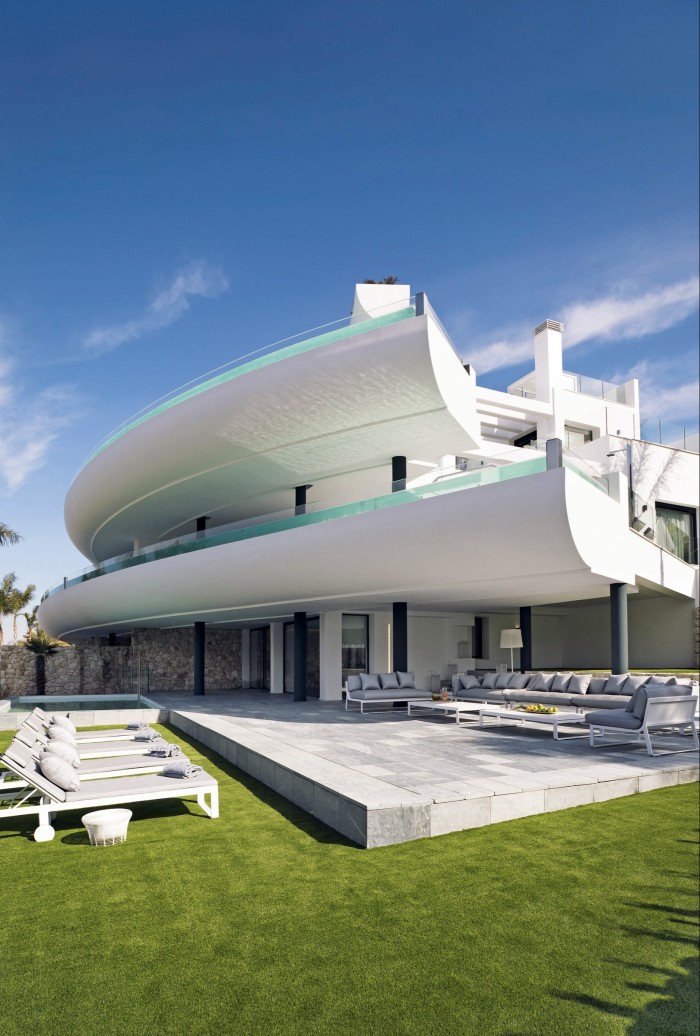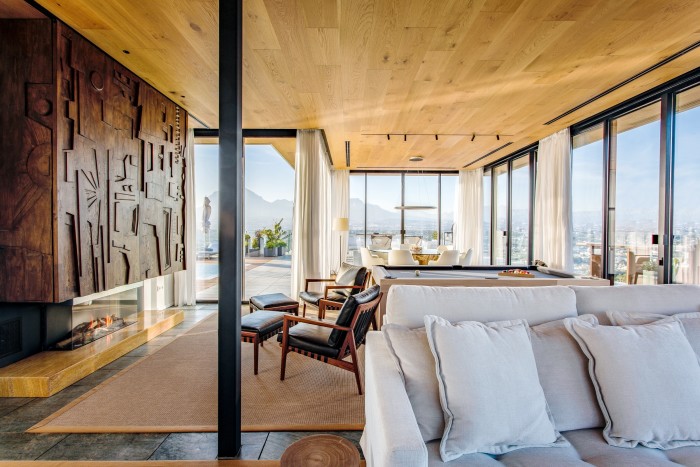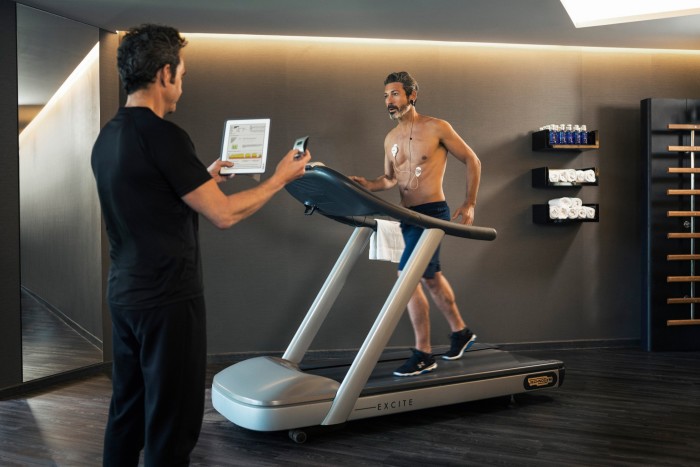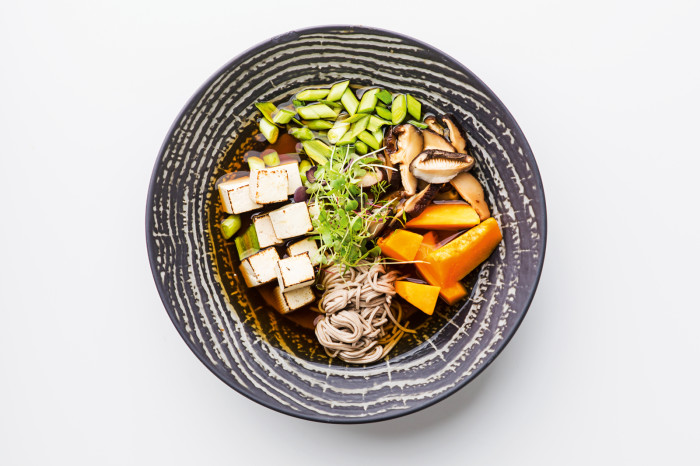Need an anti-ageing reboot?

Roula Khalaf, Editor of the FT, selects her favourite stories in this weekly newsletter.
Travel and travel planning are being disrupted by the worldwide spread of coronavirus. For the latest updates, read the FT’s coverage of the outbreak
I’d had a challenging year, and it was written all over my face. It showed in the dryness of my skin, the aubergine-hued circles under my eyes, the subtle downward migration of my jawline. I didn’t love any of this, of course (who loves physical ageing?) – but I wasn’t confounded by it. What was confounding, and very dismaying, was the corresponding drag on my aura that seemed to have set in, and that persevered no matter what I ate or drank (or didn’t), how much I exercised, or when and how long I endeavoured to sleep. It was as if gravity itself were each day concentrating a bit more around me, while my normal reserves of get-up-and-go were simultaneously being invisibly siphoned off in minute increments.
That depleted feeling couldn’t be chalked up entirely to circumstances. At my age (which is early middle age), hormones almost invariably play some role when such symptoms start to present. Hormone replacement therapy (HRT) had been mooted by several women as the solution to my problems. These women – friends, friends of friends, colleagues, a chatty 52-year-old flight attendant who proselytised over the North Atlantic on a redeye (and had the preternaturally radiant friskiness to back up her sell) – ran the gamut from barely perimenopausal to well over the hump. But the results they regaled me with were compelling: firmer, more supple skin, kickstarted metabolisms, jump-started sex drives. And – my ears pricked up every time – energy levels recharged. At least as compelling, for me, is the handful of studies (not an enormous body of research but enough to hang a legitimate science-based hope on) that seem to point to some cognitive benefits associated with HRT when it’s started during or soon after the onset of menopause. The idea of restoring the bloom to my skin was alluring, and the prospect of getting back the spring in my step more alluring still. But to someone who hopes to be writing for a living well into old age, the possibility that HRT, when administered correctly, might actually help stave off dementia and/or Alzheimer’s was downright sexy.
A family history of breast cancer makes HRT potentially riskier for me; manipulating oestrogen levels to any degree can increase the probability of developing the condition. Though those factors have become far more manageable, as science has carried HRT well beyond one-size-fits-all oestrogen prescriptions and into tailored ministrations, it’s still not something to be approached lightly. This was why I was at SHA Wellness Clinic, the medical spa that opened in 2008 on Spain’s Costa Blanca. As part of its Healthy Aging programme – already one of the most innovative of its kind, offered in seven- and 14-day options – SHA introduced bioidentical hormone replacement therapy in late 2019. (There are Healthy Aging for Men programmes as well, which can also eventually involve hormone therapy; based on the passing foot traffic to and from my appointments, I had the impression many of the men at SHA, who constituted about half the clientele, were doing some version of that programme.)

The clinic’s medical staff, including Vicente Mera, a doctor of internal medicine who’s an anti-ageing zealot, goes long and hard on genomic analysis. Across its programmes it screens for propensities toward everything from colorectal carcinoma to gluten intolerance to glaucoma to osteoporosis or periodontitis. They can do polymorphism analysis of the genes involved in drug metabolism to determine efficacy or potential toxic interactions. And with screenings known as FEMgen, they can carry out a similar polymorphism analysis both of how the body metabolises oestrogen and how it detoxifies oestrogen metabolites, for the purpose of determining whether HRT is a safe option for someone with my family history.

Roughly half of my regimen consisted of clinical tests, whose results were compiled for an exhaustive assessment: physical, cognitive, emotional. The other half was treatments, tutorials, transfusions and private sessions – with physicians, neurologists, gynaecologists, spinal specialists, yoga instructors, nutritionists, acupuncturists, aesthetic dermatologists and emotional-health counsellors. The idea is to institute good practices so you leave armed with hard intelligence to convert into good habits: DIY anti-ageing with a toolkit full of pro tips. Meanwhile, the SHA team administers state‑of-the-art interventions to stimulate rehabilitation that you can feel, and see, by the time you leave.
The clinic – bright white, tumbling down a hillside, its angular edges softened by hanging vines and enfilades of palms – is a pleasant place to be. The hard, clear Spanish light sluices through floor-to-ceiling windows and skylights; there are sunning decks and a huge pool. My room had a 7m terrace and a chic, timber-lined Jacuzzi with a panoramic view – which I admired every morning as I left, and never so much as dipped a toe into.

This was because, having conscripted myself in for the proper bells-and-whistles version of Healthy Aging, I was left with precisely zero moments to loll. The success of any such programme requires commitment, which gives the days a fairly un-vacation-like rhythm. Mine involved a nocturnal polygraph diagnosis, wherein I taped narrow tubes into my nostrils and metal monitors to my fingers, then programmed the unwieldy box strapped around my middle (to which those were all connected) to monitor my breathing, movements and heart rate all night as I – ha! – slept. There were two sessions of hydrocolon therapy. There was intravenous ozone therapy (one of quite a few needles the programme involved), and there was an hour-long pelviperineal physiotherapy session – hugely important to female sexual health, which endowed me with an understanding of the contraction capacities of my nether musculature that might put Dr Kegel to shame. In and among these were, of course, less intensive ministrations: acupuncture, two fantastic private training sessions (one dedicated to spinal support), and a divine treatment called Indiba Body that involved abdominal and back massages with oil gels and a warmed magnetic plate, whose firming-toning results are, I can report, entirely real. I was very busy – day and, sometimes, evening. There were times I found myself breaking into a trot so as to not keep the cosmetic dermatologist or the woman tasked with nebulising my lungs waiting. A late-afternoon bespoke tea regimen is part of the nutrition programme; ideally you take 10 to 15 minutes to sit and admire the view, but as often as not I ran in, threw my yuzu-apple blend back in a couple of gulps, and was off to the next commitment.

This is made surprisingly pleasant, and deeply educational, by an exceptional staff. The smiling, gentle bear of a physician who assessed my neurocognitive capabilities found my competitiveness with a machine hugely amusing, and translated the effects of hormonal fluctuations on cognition into terms I grasped. The EKG technician parsed my heart health for me in unidiomatic English spoken in a near-perfect American accent. The American nutritionist, warm and a straight talker, provisioned me with reams of recipes, and instilled in me a mild obsession with the antioxidant properties of mushrooms and the cholesterol-reducing ones of miso.

Which brings us to the food, for which SHA is famous worldwide, and justifiably so. It’s delicious, as well as beautifully plated and presented (conferring a convincing sense of indulgence and of being on something approximating a holiday). Miso broth with lemon and sea vegetables was the opening salvo of every breakfast, which usually consisted of some form of hummus, fresh fruit or fruit coulis, and chia. Fish and vegetables form the backbone of lunch and supper, with generally low-salt, low-fat, low-sugar preparations, though these ingredients were by no means banned (nor was wine, if you wanted it). Dainty porcelain dishes of fermented vegetables were offered. Weight loss wasn’t a target for my programme, so I wasn’t limited to the BioLight menu, but the choices it presented – sea bass and asparagus in a zingy pesto-y broth; a moreish vegetable-dumpling curry – were tempting enough that I ate them anyway, and loved them. At every opportunity, the doctors drew connections between nutrition, female health and ageing well.
Weekly newsletter

Make every moment matter with
How To Spend It - your essential guide to getting the best out of life. Sign up here.
And the HRT? My FEMgen results are complex, but in the end indicated mild levels of elevated risk, mitigated to a degree by metabolic patterns that lowered risk. Doable then, but at low doses, applied topically, and monitored closely with six-month check-ups of my oestrogen levels.
In the event, I haven’t started yet: Covid-19 hit full force as I was leaving the clinic, and a few months of lockdown came between me and fulfilling a prescription. In the meantime, miso now features with some regularity in my morning routine, along with reishi mushroom supplements, the spine-loving backbends I learned, some facial self-massage techniques, and quite a bit more. Ageing well is a long-view game; whether HRT eventually factors in or not, I’m pleased I’ve got the toolkit.
Deluxe suites at SHA Wellness Clinic, from €350. Seven‑day Healthy Aging Programme at SHA, from €7,500 (shawellnessclinic.com).

Comments